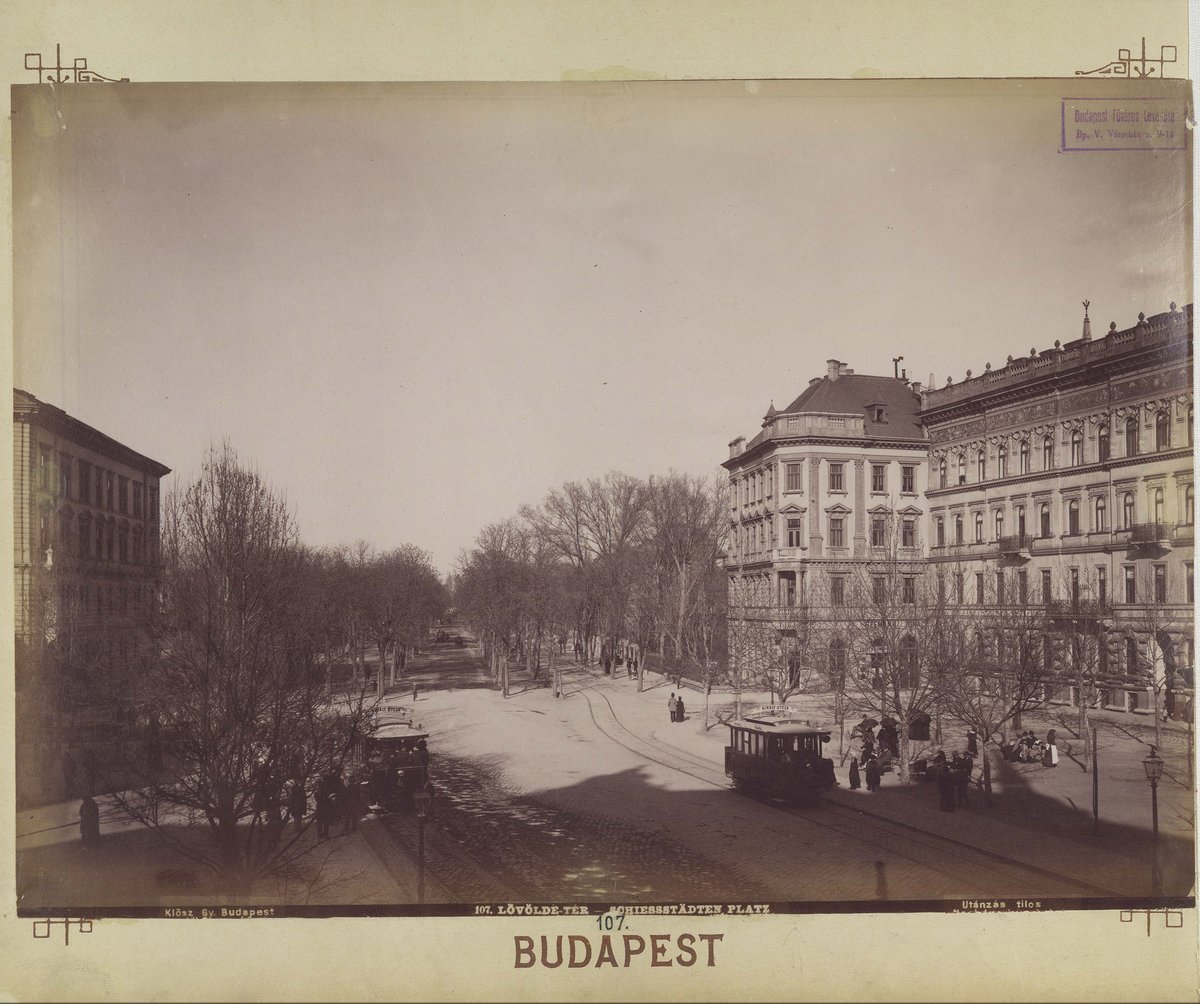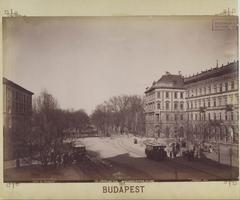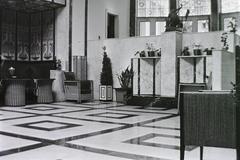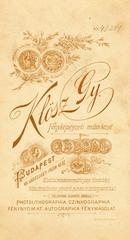
Városligeti Fasor Budapest: Visiting Hours, Tickets, and Historical Sites Guide
Date: 15/06/2025
Introduction: The Significance and Legacy of Városligeti Fasor
Tucked between the bustling heart of Budapest and the tranquil City Park (Városliget), Városligeti Fasor is a showcase of the city’s architectural grandeur and cultural evolution. Developed during the late 19th century as a tree-lined promenade, the avenue was intended to connect the urban core with one of Europe’s first public parks, reflecting Budapest’s rapid modernization and its cosmopolitan vision (Wikipedia).
Today, Városligeti Fasor enchants visitors with its blend of Eclectic, Neo-Baroque, and Hungarian Secessionist (Art Nouveau) buildings. Iconic landmarks such as the Kőrössy (ResoArt) Villa and the soon-to-open National Museum of Photographic Art in the historic Klösz Villa amplify its cultural importance. The avenue’s stately villas and leafy sidewalks narrate the stories of Budapest’s bourgeois and creative elite, while its museums and institutions continue to foster Hungarian art and heritage (ResoArt Villa, Funzine.hu).
Whether you are an architecture lover, a cultural explorer, or a curious traveler, Városligeti Fasor offers a unique encounter with Budapest’s history, artistry, and vibrant present (Lonely Planet).
Table of Contents
- Origins and Urban Development
- Architectural Highlights and Notable Buildings
- Exploring Városligeti Fasor: Visitor Information
- Nearby Attractions
- Practical Tips and FAQs
- Visuals and Resources
- Conclusion and Further Reading
Origins and Urban Development
Városligeti Fasor, or “City Park Avenue,” was conceived during Budapest’s late-19th-century expansion. Designed as a prestigious boulevard, it quickly became the residential choice for the city’s affluent citizens, providing a grand approach to the newly created Városliget (City Park) and symbolizing the city’s progressive outlook (Wikipedia).
Architectural Highlights and Notable Buildings
Art Nouveau and Eclectic Villas
The avenue is celebrated for its architectural diversity, especially its Art Nouveau (Hungarian Secessionist) masterpieces.
- Kőrössy Villa (ResoArt Villa): Designed in 1899 by Albert Kálmán Kőrössy, this villa is a paragon of Hungarian Secessionist design, with floral Zsolnay ceramics and symbolic motifs depicting the arts. It now hosts Budapest’s largest private Zsolnay ceramics collection, accessible via guided tours (ResoArt Villa).
- Székács Villa: Built in 1909 (No. 31) by Sebestyén Artúr, its fairy-tale features include a famed “tree of life” wrought-iron fence and stained glass by Róth Miksa, reflecting Ödön Lechner’s influence (Funzine.hu).
- Ádám Villa: A 1925 Neo-Baroque mansion (No. 35/A), originally for Weisz Samu, later owned by surgeon Ádám Lajos, notable for its opulent staircase and set-back garden location (Funzine.hu).
- Városligeti Fasor 8/b: This 1942 apartment building by Tibor Szivessy features a stained glass lobby window by Jenő Haranghy, exemplifying the integration of art and architecture (buildingstelltales.com).
Religious and Public Architecture
- Fasori Református Templom (Reformed Church): Completed in 1913 by Árkay Aladár, blending National Romanticism and Hungarian folk motifs. Its Greek cross plan and Zsolnay ceramics, along with stained glass by Róth Miksa, make it architecturally significant. The church recently underwent a full restoration (Funzine.hu).
- Klosz Villa: Soon to be home to the National Museum of Photographic Art, opening in 2025, with a vast collection of historic and contemporary Hungarian photography (csodalatosbudapest.hu, magyarepitok.hu).
Exploring Városligeti Fasor: Visitor Information
Visiting Hours and Tickets
- Városligeti Fasor: Publicly accessible, open 24/7.
- ResoArt Villa: Guided tours Tuesday–Sunday, 10:00–18:00; tickets ~1500 HUF, discounts for students/seniors. Book at ResoArt Villa.
- Fasori Református Templom: Monday–Saturday, 9:00–17:00; free entry, tours by arrangement.
- Klösz Villa (National Museum of Photographic Art): Opens mid-2025, Tuesday–Sunday, 10:00–18:00; ticket details TBA (Funzine.hu).
Accessibility and Transportation
- Public Transit: Metro M1 to Hősök tere, trams 1/1A to Lövölde tér, and various bus routes provide easy access (Triptobudapest.hu).
- On Foot: Wide, level sidewalks make the avenue ideal for walking and wheelchair access, though individual villa access may vary.
- Visitor Amenities: Cafés, restrooms, and restaurants are available near City Park and Andrássy Avenue.
Guided Tours and Events
- ResoArt Villa and Collector’s House: Offer regular guided tours (English available) and host Zsolnay ceramics exhibitions and cultural events (AllEvents.in).
- Annual Festivals: The Szecesszió Fesztiválja (Art Nouveau Festival) at No. 12 celebrates the avenue’s heritage with workshops and exhibitions (AllEvents.in).
Nearby Attractions
- City Park (Városliget): Features the Széchenyi Thermal Baths, Vajdahunyad Castle, Budapest Zoo, and tranquil green spaces.
- Heroes’ Square (Hősök tere): Iconic UNESCO World Heritage site at City Park’s gateway.
- Museum of Fine Arts and Kunsthalle: Major art institutions within walking distance.
Practical Tips and Frequently Asked Questions
Best Time to Visit
- Spring and early autumn offer lush greenery and pleasant weather. Weekdays and mornings are least crowded (Budapestbylocals.com).
What to Bring
- Comfortable shoes, weather-appropriate clothing, refillable water bottle, and a camera are recommended (Amateur Traveler).
- Cash (Hungarian Forint): While credit cards are common, some vendors may be cash-only.
Accessibility
- The avenue is mostly wheelchair-friendly; check individual venues for detailed accessibility.
Safety and Etiquette
- Budapest is generally safe; standard precautions apply. Politeness and learning a few Hungarian phrases are appreciated (Triptobudapest.hu).
FAQs
Q: What are the general visiting hours?
A: The boulevard is always open; individual attractions have set hours.
Q: Are tickets required?
A: The avenue is free; tickets are needed for certain guided tours and exhibitions.
Q: Is Városligeti Fasor wheelchair accessible?
A: Sidewalks are accessible; some historic buildings may have limitations.
Q: Are guided tours offered?
A: Yes, at ResoArt Villa, the Collector’s House, and during festivals.
Visuals and Resources
Images and interactive maps are available on official sites and city tourism portals. Example alt texts: “Kőrössy Villa facade on Városligeti Fasor, Budapest”; “Tree-lined promenade in Városligeti Fasor Budapest”.
Conclusion: Plan Your Visit and Explore More
Városligeti Fasor is more than a picturesque boulevard—it is Budapest’s living museum, reflecting architectural innovation, creative ambition, and community spirit. As you stroll beneath its leafy canopy, marvel at its ornate villas, or attend a guided tour or festival, you’ll experience the city’s past and present in harmony. For up-to-date information on visiting hours, ticketing, and events, always check official websites.
Call to Action:
Enhance your experience by downloading the Audiala app for guided audio tours and follow our blog and social media for the latest travel tips. Share your discoveries with #VárosligetiFasorBudapest and tag us for a chance to be featured. For related content, explore our guides to City Park (Városliget), Heroes’ Square, and Budapest Art Nouveau Architecture.
References and Further Reading
- Városligeti Fasor Budapest: Visiting Hours, Tickets & Historical Highlights (ResoArt Villa)
- Visiting Városligeti Fasor: Architectural Heritage, Tickets, and Travel Tips in Budapest (Wikipedia)
- Luxus a lombok alatt – séta a Városligeti Fasor villáinak nyomában (Funzine.hu)
- Zsolnay kiállítás – ResoArt Villa (Welovebudapest.com)
- 11 Practical Tips for Traveling to Budapest (Triptobudapest.hu)
- Kőrössy Villa, Budapest (Lonely Planet)
- The Collector’s House Guided Tour (AllEvents.in)










































































































































































